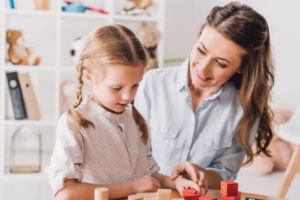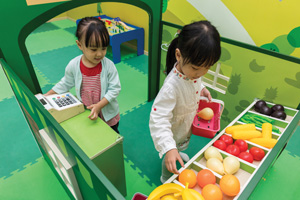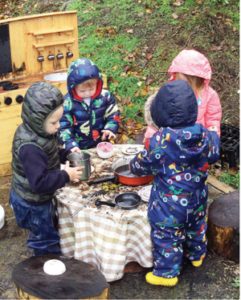
All Your Legal Worries Answered
In each issue of ABC one of Brighton’s leading firms of Solicitors Dean Wilson LLP, covers a topic of interest to parents everywhere. In this issue, Julian Hunt, Partner of the Family Department, aims to set out some of the practical issues you should consider if your relationship has broken down.
The breakdown of your relationship is a distressing and emotional experience. The following summary aims to set out some of the issues you should consider if your relationship has broken down. Of course, every individual case is different and therefore it is advisable that you discuss the situation with your Solicitor.
Here are some general tips about issues, which you will need to consider right away:
• Children – decisions need to be made about who will care for the children. Many parents are able to make arrangements between themselves which is always the best way. If you encounter difficulties consider a referral to Mediation. Court proceedings should only be a last resort.
Take note that the Children Act provides a presumption that the involvement of each parent in the life of the child will further the child’s welfare. ‘Custody’, ‘Residence’ and ‘Contact Orders’ are terms which no longer apply. Instead the Court will make a ‘Child Arrangements Order’ to define the amount of time that the child would spend with each parent.
• Inform your children jointly of the decision to separate and emphasise that it is not their fault and that both parents love them equally.
• Child Support – try to reach a voluntary arrangement with your ex-partner for a weekly or monthly payment. Go to www.gov.uk/child-maintenance and use the child maintenance calculator to assess how much your ex-partner should pay.
• Ongoing financial Support – (‘spousal maintenance’) – if you are married you could apply for maintenance for yourself. If you are not married your partner does not have a duty to support you once the relationship ends, only to pay child support if applicable.
• Property – if there are children involved it is always better for parents to come to a mutual decision about who will leave
the home so that it will cause the least disruption for the family. If you jointly own the property you cannot simply change the locks and exclude the other from the property. If you are a non-owning spouse you have rights of occupation and a right not to be evicted from your home. Application can be made to the Land Registry to protect your occupation and prevent your spouse from disposing of the property.
If you have been subjected to
or threatened with physical abuse by your partner you may need to consider making application for a Court Order
to have them excluded.
If you are in rented accommodation and you are moving out of the property, you should see if you can be removed from the Tenancy.
On Separation:
• Contact the Local Authority Council Tax Section as you may be eligible for a Council Tax reduction, or if you are moving out of the property to ensure that you are not liable for any subsequent payments.
• Contact the Benefits Agency if you are in receipt of benefits, as separation may affect your entitlements.
• Contact the Tax Office if you are receiving Universal Credit or Tax Credits to reassess your entitlements, or otherwise to see if you are now entitled to Child and Working Families Tax Credits.
• Contact your banks, building societies especially if you have a joint account. It may be advisable to consider freezing the account to prevent your partner from withdrawing some or all of the funds without your agreement, or at least change the drawing arrangement so that withdrawals require both your signatures.
• Contact all credit card companies especially if you have joint credit cards because you are jointly responsible for any expenses incurred. You do not want a situation whereby your partner could run up further debts because ultimately the credit card company could also pursue you for these as the card is in your joint names.
• Consider changing your Will if you have appointed your ex-partner as the beneficiary of your Estate. If you have not made a Will then you may want to consider making one to ensure that your Estate does not automatically pass to your spouse, or you may want to make specific provision for any children to ensure security for them.
As an ABC reader you can call the Private Client Department on 01273 249200 to arrange a no obligation telephone discussion and, if required, a fixed-fee meeting.


 However, concerns have already been raised about the lack of mental health services available to young people once issues have been identified. Shadow Health Secretary Barbara Keeley said: “Once again we hear warm words from the Prime Minister on mental health, but the reality is that mental health services are stretched to breaking point and people with mental health problems aren’t getting the support they need.”
However, concerns have already been raised about the lack of mental health services available to young people once issues have been identified. Shadow Health Secretary Barbara Keeley said: “Once again we hear warm words from the Prime Minister on mental health, but the reality is that mental health services are stretched to breaking point and people with mental health problems aren’t getting the support they need.”



 Forest School is a more sustained, long-term process which aims through positive outdoor experiences to encourage and inspire children to love the world around them. For preschool children, Forest School nurtures their sense of wonder and their curiosity about the world outside, closely entwined with the ideals of free-flow play and learning from play that underpin the child-centred learning ethos and areas that lie at the heart of the Early Years Foundation Stage which runs from birth to five years of age. Away from their school or nursery, they have adventures in natural habitats such as woods, rivers and streams, ponds and beaches. Supervised with the lightest of touches by staff, the children have the freedom to discover what fascinates them in nature and to respond spontaneously to the environment they are exploring.
Forest School is a more sustained, long-term process which aims through positive outdoor experiences to encourage and inspire children to love the world around them. For preschool children, Forest School nurtures their sense of wonder and their curiosity about the world outside, closely entwined with the ideals of free-flow play and learning from play that underpin the child-centred learning ethos and areas that lie at the heart of the Early Years Foundation Stage which runs from birth to five years of age. Away from their school or nursery, they have adventures in natural habitats such as woods, rivers and streams, ponds and beaches. Supervised with the lightest of touches by staff, the children have the freedom to discover what fascinates them in nature and to respond spontaneously to the environment they are exploring.













